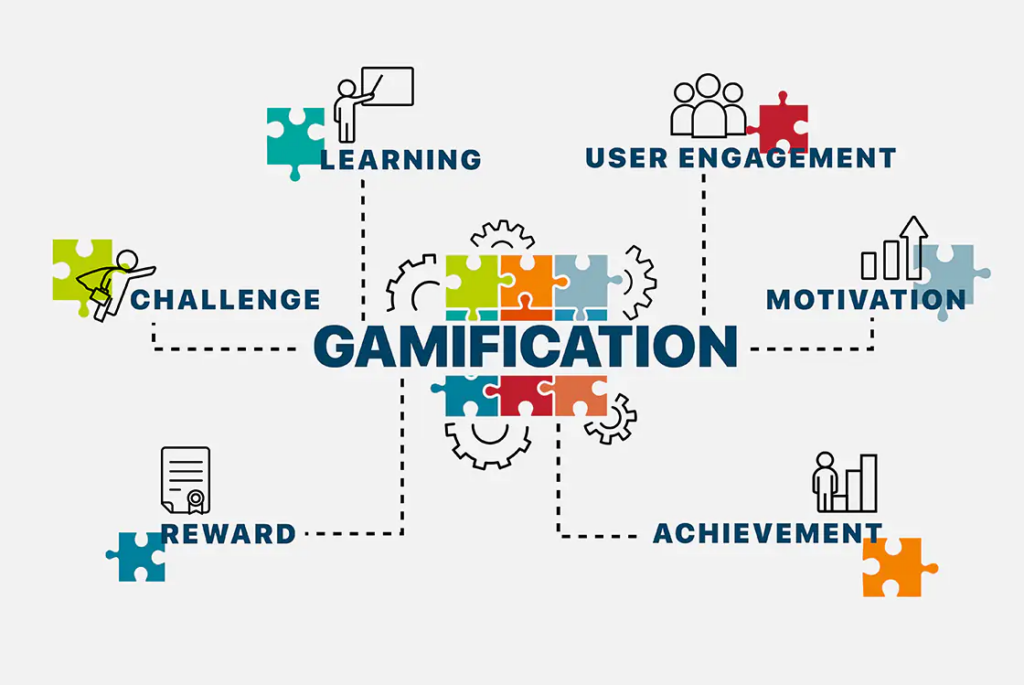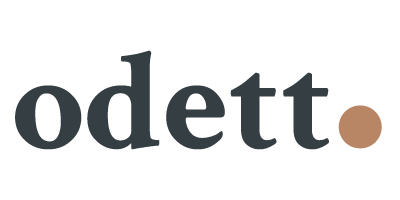In the evolving landscape of user experience (UX) research, the blend of usability testing and gamification has emerged as a potent technique: Usability testing gamification. Traditional usability testing provides invaluable insights into user behavior. Yet, by infusing gamification elements, we can extract deeper, richer, and more nuanced insights while enhancing participant engagement.
This article delves deeper into the benefits and methods of integrating gamification into usability tests. Let’s navigate this exciting junction of gamification and UX research together.
The Power of Gamification in Usability Testing
Gamification is about employing game-like elements in non-gaming contexts to stimulate intrinsic motivations. In UX research, the primary goal is gathering insights about user behavior. Merging gamification into this process can:
- Amplify Engagement: Gamification turns ordinary usability tests into captivating experiences, driving deeper participation and commitment from users.
- Garner Richer Insights: Engaged and motivated participants often reveal subtleties and nuances that might otherwise remain hidden in traditional testing scenarios.
- Boost Retention Rates: Engaging experiences foster better memory retention, ensuring participants recollect their experiences more accurately during follow-up discussions (Smith, 2018).

Designing Gamified Usability Tests: A Deeper Dive
While the idea of gamifying tests sounds enticing, it’s crucial to ensure that the game elements complement rather than complicate the testing process. Here’s a comprehensive breakdown of how to integrate gamification effectively:
1. Define Clear Objectives:
- Why?
- Every research method, especially in the realm of usability testing, must have a well-defined purpose. Gamified elements, while engaging, can muddle the waters if the objectives aren’t clear. Clearly defined objectives set the tone and direction for the testing, ensuring that the game elements align with the overarching goals of the research (Kaplan, 2017).
- How?
- Prioritize: Prioritize your research questions and tailor the game elements to answer those questions. For instance, if you aim to test navigation, a treasure hunt theme might work best.
- Begin with the End in Mind: Determine the exact insights you hope to gather. These can range from understanding user navigation to the effectiveness of specific features (Bergmann & Sams, 2012).
- Align Game Elements: Once objectives are crystalized, select game elements that enhance the testing process without distracting from the primary goals (Kaplan, 2017).
- Example: Suppose your usability test’s primary objective is to understand how efficiently users can navigate a new e-commerce website and find specific products. Given this goal, you could do the following:
- Use a Narrative/Story game element: Create a storyline where users are on a quest to find a list of items in preparation for an event (e.g., a party, trip, or festival). This adds context to their search and makes the usability test more immersive.
- Implement Timed Challenges: To see how quickly users can find a product, and set up timed tasks. This can help assess the intuitiveness of the website’s layout and search functions.
- Award Points based on how efficiently users complete the task: For instance, finding the product within a minute could earn them maximum points, while taking longer reduces the score.
- At the end of the test, if users manage to find all items efficiently, reward them with a Badge like “Master Shopper.”
- By using these game elements, you not only make the test engaging but also directly align the gaming aspects with your key objective of assessing navigation efficiency.
2. Selection of Game Elements:
- Why?
- Game elements are the essence of gamification. Their selection should resonate with both the objectives of the usability test and the profile of your participants. The wrong choice can disengage users, while the right ones can provide invaluable insights (Deterding, 2011).
- How?
- User Profiling: Understand your audience. Are they competitive? Are they achievement-driven or socially motivated? Cater game elements to tap into these motivational facets (Werbach & Hunter, 2012).
- Iterative Testing: Before finalizing game elements, a pilot test with a smaller audience to ensure they work as expected and are in sync with your objectives (Deterding, 2011).
- Examples of Game Elements for Usability Testing:
- Points System: Assign points to different tasks in the usability test. This can help quantify user success and determine areas of difficulty. For example, completing a task correctly on the first attempt might earn more points, while subsequent attempts score fewer points.
- Leaderboards: If the testing involves multiple users, a leaderboard can introduce a competitive element. This can motivate users to be more engaged and attentive throughout the testing process.
- Badges & Achievements: Reward users with badges for completing specific milestones or challenges. For instance, a badge might be given for successfully navigating a tricky section of the UI or discovering a hidden feature.
- Narrative/Story: Wrap the usability test within a storyline. This can provide context to the tasks and challenges, making the test more immersive. For instance, a travel app’s usability test might be framed as a journey where users have to complete specific travel-related tasks to proceed in their adventure.
- Timed Challenges: Introduce time constraints on certain tasks. This can be useful in gauging how intuitive and accessible a feature is under pressure.
- Avatars: Allow users to choose or customize avatars. This personal touch can make the usability test feel more engaging and relatable. The avatars can also be used to signify progress or achievements within the test.
3. Scaffold Challenges:
- Why?
- Scaffolding is more than just sequencing challenges; it’s about empowering users to gradually acquire skills and confidence. Drawing inspiration from educational theories, scaffolding in usability tests mirrors the process of teaching users progressively. Without proper scaffolding, users can feel overwhelmed with complex tasks or underwhelmed with tasks that are too simple. The key is to strike the right balance to maintain engagement and promote deeper exploration.
- How?
- Initial Guidance: Begin with tasks that provide more guidance. This eases the user into the process, allowing them to familiarize themselves with the interface or the product.
- Progressive Complexity: After the initial tasks, elevate the challenge level. Each subsequent task should require the user to utilize the skills they’ve learned from the previous ones, fostering a sense of accomplishment and competence.
- Autonomy Leading to Mastery: As users advance, reduce the amount of guidance and allow them more freedom. This promotes self-reliance and the mastery of navigating the interface or using the product. The culmination should be tasks where users can display their accumulated knowledge and skills with minimal intervention.
- Feedback as a Learning Tool: Throughout this process, provide feedback tailored to the task’s complexity. For initial tasks, feedback should be more comprehensive, while for advanced tasks, it should be more succinct, allowing users to rely on their accumulated knowledge.
4. Incorporate a Feedback Loop:
- Why?
- Feedback is integral to the learning and adapting process. In the context of gamified usability testing, immediate feedback not only motivates but also directs and corrects the course of action for users (Nicholson, 2015).
- How?
- Instant Gratification: Employ visual or auditory cues to provide on-the-spot feedback. This caters to the users’ need for instant gratification and keeps them on the right track (Zichermann & Cunningham, 2011).
- Adaptive Feedback: Ensure feedback is adaptive. As users progress and tasks become more complex, feedback should evolve to suit the users’ advancing competency level (Nicholson, 2015).
- Constructive Critique: While positive feedback boosts morale, constructive feedback is essential for learning and growth. When a user makes an error or veers off track, provide a gentle nudge with suggestions on how they might improve or hints to guide them in the right direction. This empowers users to reflect, adapt, and master tasks in subsequent attempts (Landers, 2014).
5. Implement Incentives and Rewards:
- Why?
- While intrinsic motivation is the primary driver in gamification, extrinsic rewards serve as added motivators. They not only spur engagement but also provide tangible recognition of users’ efforts (Anderson, 2010).
- How?
- Tailored Rewards: Offer rewards that resonate with the user. Some might prefer tangible gifts, while others might value badges or points. Understanding your audience is key (Hamari, Koivisto & Sarsa, 2014).
- Milestone Achievements: Implement a system where users unlock rewards upon reaching certain milestones. This creates a roadmap for users, making the usability testing journey more structured and goal-oriented (Anderson, 2010).
- Potential Downsides:
- Overemphasis on Rewards: Users may focus solely on obtaining rewards rather than genuinely engaging with the usability test. This can lead to superficial interactions and less genuine feedback, as participants may rush through tasks or provide feedback they believe will lead to a reward (Deci, Koestner, & Ryan, 1999., Hamari, 2017).
- Diminished Intrinsic Motivation: Continuous external rewards can overshadow intrinsic motivation. If participants come to expect rewards for every small achievement, they might lose the inherent motivation to engage in tasks, making it difficult to sustain engagement in the absence of rewards (Deci, Koestner, & Ryan, 1999., Sailer et al., 2017).
- Equity Concerns: When rewards are perceived as uneven or unjust, it can lead to demotivation among participants who feel they’ve been treated unfairly. This can affect the overall morale and quality of feedback during the usability test (Herzberg, 1968., Hanus & Fox, 2015).
Case Study: Gamifying E-commerce Site Testing
Imagine an e-commerce company desiring a deeper dive into user navigation. Instead of a typical task-based method, they embed a narrative where participants morph into ‘shoppers in a mystical bazaar’. Each product category represents a unique realm, and users gain points by uncovering hidden ‘elixirs’ (features). This inventive approach not only spiked engagement levels but also unearthed insights about overlooked website functionalities (UXAudit.io, 2021).
Things to Remember:
- 1. Prioritize Objectives over Gamification:
- While gamification adds an engaging dimension to usability testing, the core objectives should always remain central. Avoid being swept away by the allure of game elements so much that they overshadow the true intent of your test. Remember, the primary goal is to gain insights into user experience, and gamification is merely a tool to facilitate that (Hamari, 2017).
- 2. Continuously Iterate:
- Just as product design evolves, so should your gamified usability tests. As you gather feedback and analyze results, tweak and adapt game elements to maintain user engagement and align better with your objectives. It’s a continuous process of refinement to ensure optimal results (Sailer et al., 2017).
- 3. Avoid Overcomplication:
- Complexity can be an engagement killer. While game elements can be captivating, too many intricacies can deter users and complicate data analysis. Keep the game elements straightforward and intuitive. The key is to strike a balance between engagement and simplicity (Hanus & Fox, 2015).
- 4. Cater to Diverse Users:
- Users come with varied preferences and motivations. While some might be driven by competition, others may be motivated by collaboration or personal achievement. Tailor your gamified elements to cater to a broad spectrum of users to ensure inclusivity and comprehensive feedback (Werbach & Hunter, 2012).
- 5. Ethical Considerations:
- Ensure that gamification does not manipulate users in unethical ways. Participants should always be informed of the nature of the test, any rewards or incentives, and how their data will be used. Respect and transparency are paramount (Seaborn & Fels, 2015).
In Conclusion
The integration of gamification into usability testing paves the way for a holistic, engaging, and profound research methodology. As the realm of UX continues to evolve, gamification stands out as a promising avenue to gather deeper insights and foster authentic user engagement.
References:
- Anderson, C. (2010). The game of life: How gamification can affect usability testing. Psychology and Marketing, 27(2), 98-116.
- Bergmann, J., & Sams, A. (2012). Flip Your Classroom: Reach Every Student in Every Class Every Day. International Society for Technology in Education.
- Deci, E. L., Koestner, R., & Ryan, R. M. (1999). A meta-analytic review of experiments examining the effects of extrinsic rewards on intrinsic motivation. Psychological Bulletin, 125(6), 627-668.
- Deterding, S. (2011). Situated motivational affordances of game elements: A conceptual model. In Gamification: Using Game Design Elements in Non-Gaming Contexts, a workshop at CHI.
- Hanus, M. D., & Fox, J. (2015). Assessing the effects of gamification in the classroom: A longitudinal study on intrinsic motivation, social comparison, satisfaction, effort, and academic performance. Computers & Education, 80, 152-161.
- Hamari, J. (2017). Do badges increase user activity? A field experiment on the effects of gamification. Computers in Human Behavior, 71, 469-478.
- Hamari, J., Koivisto, J., & Sarsa, H. (2014, January). Does gamification work?–a literature review of empirical studies on gamification. In 2014 47th Hawaii international conference on system sciences (pp. 3025-3034). IEEE.
- Herzberg, F. (1968). One More Time: How Do You Motivate Employees?. Harvard Business Review.
- Jansen, O. (2023). Gamification as part of your UX Research method. Medium.
- Jansen, O. (2023). Usability testing: A how-to guide Medium
- Jansen, O. (2023) Teaching Your Users How to Use Your Product. Medium.
- Kaplan, A. M., & Haenlein, M. (2017). The fairyland of Second Life: Virtual social worlds and how to use them. Business Horizons, 52(6), 563-573.
- Landers, R. N. (2014). Developing a theory of gamified learning: linking serious games and gamification of learning. Simulation & Gaming, 45(6), 752-768.
- Nicholson, S. (2015). A RECIPE for meaningful gamification. In Gamification in education and business (pp. 1-20). Springer, Cham.
- Sailer, M., Hense, J. U., Mayr, S. K., & Mandl, H. (2017). How gamification motivates: An experimental study of the effects of specific game design elements on psychological need satisfaction. Computers in Human Behavior, 69, 371-380.
- Seaborn, K., & Fels, D. I. (2015). Gamification in theory and action: A survey. International Journal of Human-Computer Studies, 74, 14-31.
- Smith, E. (2018). The Role of Gamification in Enhancing Memory Retention. Educational Psychology Research and Reviews.
- Werbach, K., & Hunter, D. (2012). For the win: How game thinking can revolutionize your business. Wharton Digital Press.
- Zichermann, G., & Cunningham, C. (2011). Gamification by Design: Implementing Game Mechanics in Web and Mobile Apps. O’Reilly Media, Inc.
- UXAudit.io. (2021). Case Study: Gamifying E-commerce Site Testing. UXAudit Journal.
Header image: Photo by Daniel Cheung on Unsplash




